May 11th, 2025
BURLINGTON, ON
Trump Revives Talk of 51st State. It’s Not Funny Anymore
The US doesn’t need tanks to take over Canada—just trade policy and chaos. Here’s how we fight back
Reprinted from The Walrus magazine, Canada’s conversation; it a long read – take your time – the future of Canada as we know it is the issue.
The United States embassy in Ottawa is a long, low, stone-faced hulk of a building. To some, it looks like an attack submarine; others have likened it to an aircraft carrier. It spreads its dismal bulk down Sussex Drive; from its windows, you can see the East Block of Parliament. Nearby is a monument to Canadian peacekeepers. Just a little further afield is the famous Louise Bourgeois sculpture of a gigantic spider that guards the entrance to the National Gallery of Canada. This architectural trio seems suddenly perfect for our times. A menacing US war machine and a monstrous spider. Caught between: a handful of well-meaning Canadian peacekeepers in uniform looking out on a vanished past.
Canadians, with a cherished mythology as the world’s peacekeepers, are going to have to get used to a radically new outlook on national security and defence, one that pivots toward an unprecedented threat to our sovereignty. This threat is no longer confined to some distant set of authoritarian states but now comes from our closest neighbour and long-time friend. The United States president, Donald Trump, and his top advisers have repeatedly made annexationist and imperial threats against Canada, with the stated endgame of turning the country into the “fifty-first state.” Trump aides have advised Canadian officials, including visiting “Team Canada” premiers and territorial leaders, that the president means what he says.

A photo illustration of a Canadian flag. The maple leaf is replaced by blue and white stars from the American flag. Adam Maida
Take Mike Waltz, Trump’s national security adviser, a lantern-jawed former Green Beret turned Republican congressman. Waltz appeared on NBC on February 9 and was asked about the prospect of the US annexing Canada. The question followed then prime minister Justin Trudeau’s hot-mic comments at the Canada–US Economic Summit in Toronto, where he suggested the US had its sights on Canada’s critical minerals. Waltz was reassuring, sort of. He said there were no plans for a military invasion. But then he went on to talk about the reassertion of “American leadership” in the western hemisphere, telling the NBC host “that’s what we’re talking about, from Greenland to Arctic security to the Canal coming back under the United States.”
We have heard about Trump’s desire to buy Greenland. The Panama Canal—to repossess it. But Arctic security? That’s a code word in plain sight. Waltz was describing the US laying claim to land that isn’t theirs—Canadian sovereign territory.
At a recent Conservative Political Action Conference convention, Trump’s former chief strategist, Steve Bannon, praised the president’s annexationist talk, calling it a “compliment to Canada.” He said he believed the next geopolitical battle will involve Canada’s natural resources, including critical minerals. Canada, he said, will have “tremendous vulnerability there” and no military, or even stomach, to defend its interests.
Then there is John Ratcliffe, the newly appointed director of the Central Intelligence Agency, a man who served Trump during his first administration. Leaks out of Washington point to a reorganization of the CIA under Ratcliffe. According to an aide, Trump’s CIA is expected to shift its attention more heavily toward the western hemisphere, focusing on nations not usually seen as US adversaries. This could, the aide suggested, include using espionage to strengthen Trump’s hand in trade negotiations—for instance, by spying on the Mexican government amid ongoing economic tensions.
It’s always hard to measure the veracity of leaks. Maybe this one was just meant as a frightener. Frightening or not, it doesn’t take a wild exercise of imagination (or paranoia) to substitute “Canada” for “Mexico.” We, too, are squarely in the western hemisphere, not a traditional adversary, engaged in a trade war with the US. We know the CIA has already stepped up secret spy flights over Mexico, using drones with sensor packages able to sniff out the chemical signatures of fentanyl labs. The flights have put the Mexican government on edge. It can’t happen here, right?
Canadians should take the rhetoric, the threats, seriously. We have to move past the kind of response once offered by our minister of national defence, Bill Blair, who described the calls for annexation “offensive” but insisted they don’t pose a genuine danger. They do, clearly.
What’s unfolding is the opening act of hybrid warfare. We know about hybrid cars and hybrid work. But hybrid warfare? Sometimes called “grey zone warfare,” the term is often credited to former Pentagon analyst and author Frank Hoffmann. It refers to the use of coercive tactics that stop short of open war to pressure or destabilize a foreign target. The German media outlet Deutsche Welle, reflecting on Russia’s actions against Ukraine and the West, defined it as an attempt to “weaken and destabilize the enemy from within.” Hybrid warfare can involve economic pressure, political intimidation, disinformation campaigns, influence operations, cyber attacks. Think of its effect on a country like termites in a house—busy, persistent, and almost invisible until the foundation is too hollow to hold.
t’s one thing to expect this from enemies. Another to see it from a friend. That’s a world that Canada doesn’t yet seem ready to face. The stakes are high. We could be subjected to a sort of “Finlandization”—when the Finns experienced overweening Soviet power during the Cold War, which left them with nominal independence; we could become a satellite state, directed from afar, like the Soviet-subjugated members of the Warsaw Pact, such as Poland and Czechoslovakia; or we could be reduced to a piece of real estate in an expanded American sphere of influence that would be indistinguishable from an empire.
Vincent Rigby, a former national security and intelligence adviser to Prime Minister Trudeau, didn’t mince words. He described US actions—the tariffs, Trump’s relentless stream of online falsehoods—as “the acts of a hostile state.”
We must defend against these onslaughts throughout Trump’s presidency—and perhaps well beyond.
But how to react? What’s Canada’s game plan?
It starts where all strategic policy should start: with Canadian intelligence. Intelligence, as Rigby reminded me, is one of our levers of national power. Historically, we have enjoyed a close intelligence-sharing partnership with the US, dating back to World War II. But the relationship is deeply asymmetrical. Their capabilities far exceed ours, and their contributions dwarf what we provide in return.
We have long benefited from this imbalance. Relying on the US has allowed Canada—especially through the Canadian Security Intelligence Service, our domestic security agency—to focus on homegrown threats at the expense of full global capacities and knowledge. But that reliance has come with costs, including dependency. Canada will have to become much less trusting of US intelligence and cultivate its own network for global surveillance, analysis, and strategic decision making—less outsourcing, more autonomy. This will take time and resources. It may even demand a long-delayed decision to establish a dedicated foreign intelligence service, a Canadian version of the CIA.
That shift to greater intelligence sovereignty may come sooner than expected. Ward Elcock, who led CSIS for a decade, believes worsening diplomatic ties and the damage inflicted on US intelligence agencies by Trump’s appointees and policies will probably erode their ability—and willingness—to collaborate with Canadian counterparts. “It’s unavoidable,” he told me.
Even without threats—recently associated with Trump adviser Peter Navarro—that the US might kick us out of the Five Eyes spy alliance, we will have to diversify our intelligence ties. The Five Eyes, a unique partnership between Canada, the US, the UK, Australia, and New Zealand, has largely been the only game in town for Canada since we helped establish it in the aftermath of World War II.
It can no longer be the only game in town. As Minister of Foreign Affairs Mélanie Joly has indicated, Canada will need to deepen intelligence co-operation with European partners. That means enhancing information sharing with Nordic countries on Arctic security, and with the Baltics, Poland, and Ukraine on threats from Russia. We already have long-standing bilateral arrangements with countries like France and Germany, which work closely with the Five Eyes as “third parties” just outside the magic circle. These relationships must be strengthened, and Canada will need to invest real resources to do so. Diversifying our intelligence partnerships won’t fully replace the diminished US role, but it must be our Plan B.
The trade disruption will push our economy toward a recession.
Jody Thomas was Canada’s national security and intelligence adviser during the 2022 Freedom Convoy and the first year of Russia’s war in Ukraine. She believes that if there was ever a moment to strengthen our security agencies, this is it. Thomas also underscores the need to protect the intelligence relationship with the US. Even with shifting politics, that bond still holds. “The professionals on both sides of the border,” she says, “will not willingly take action that negatively affects either country.”
I sincerely hope she is right. But that doesn’t change the fact Canada will have to do more international intelligence collection and analysis, to see and understand global threats through our own lens. Such a global scan also means doing something we have historically been loath to do: turn the lens on the US, to more comprehensively collect intelligence on what goes on south of the border. Such reporting won’t require secret methods but can draw on open-source intelligence, diplomatic reports, the knowledge of liaison officers embedded in US government agencies, and the contributions of the other Five Eyes partners whom we can trust.
The objective is to have the best possible anticipatory intelligence on the US and its intentions. It’s about creating a better understanding of the revolutionary nature of Trumpian policy and the key actors involved, fully grasping how the “America First” world view reshapes assumptions about security in the western hemisphere—which directly implicates Canada.
This is not an academic exercise. It’s a matter of foresight—knowing where the puck is going. We need to understand US strategy even if it is inchoate and fluctuating; we must have in-depth profiles of the people around Trump so we can sense how they might act in future. We must try to drill into the mind of Trump himself.
The Trump team will not only despoil an intelligence partnership of long standing and force its reshaping—they will come after our pocketbook. The administration has already threatened our economic security with tariffs, and there’s every reason to believe it will keep happening. For the US, these tariffs are more than trade policy; they’re part of a broader push toward self-sufficiency—a modern autarky, where the goal is to cut reliance on foreign goods and resources altogether. The last time major powers tried to pursue autarkic goals was during World War II. Who were those powers? The Third Reich and Japan. Both attempted it through imperial expansion and conquest. It didn’t work out well for them.
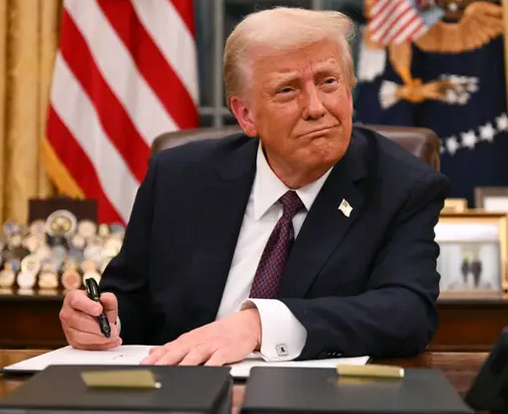
“Trump is set on destroying the long-standing integrated supply chains that have benefited our two countries. The disruption will hit hard at our auto, aerospace, and manufacturing sectors, especially and push our economy towards a recession.”
Trump thinks he can do better. Severing America’s reliance on global trade will also serve to shut off Canada’s economic lifelines. This is why tariffs function as hybrid warfare: they don’t require military force but apply destructive pressure just as effectively. And they serve a dual purpose, both weakening Canada and giving the US leverage in future negotiations. John Knubley, deputy minister of innovation, science, and economic development who served from 2012 to 2019, doesn’t sugar-coat it. “Trump is set on destroying the long-standing integrated supply chains that have benefited our two countries,” he told me. The disruption “will hit hard at our auto, aerospace, and manufacturing sectors especially and push our economy towards a recession.”
It doesn’t take an economist to know that “hit hard” means loss of jobs, of capital, of manufacturing plants, of innovation—the very things that a modern economy depends on.
Our response must be bold. Patrick Leblond is a financial policy expert and associate professor who teaches in the graduate school of public and international affairs at the University of Ottawa. He has called the US assault on the Canadian economy a “Sputnik moment” for economic security, one that, like the Cold War space race of old, demands a moonshot response. He outlines three major steps to get there.
First, Canada needs to break down internal trade barriers. Right now, it’s easier for some businesses to trade with the US than between provinces. These restrictions cost us billions annually. Second, Canada has to stop leaning so heavily on US markets. Yes, Canadian exports to other countries are expanding, but not fast enough. Germany and South Korea built global trade networks to hedge against dependence on a single partner. Canada needs to do the same, but as Leblond warns, “it will require a lot more effort.” The third step addresses a problem that has weighed the country down decade after decade: productivity—or our chronic lack of it. While other nations pour resources into automation, research, and digital transformation, Canada lags, comfortable in its inefficiencies.
In space, we need “look-down capacity”: our own fleet of spy satellites.
Fighting a hybrid war on the economic front begins with building an economy that can’t be pushed around. This also means shielding ourselves from predatory foreign investment, especially from the US. In a combative press conference on March 4, responding to new tariffs from Trump, Trudeau made it clear his government wouldn’t let Canadian companies become collateral damage in a trade war, “leaving them open to takeovers.”
Think of it as a process parallel to espionage. A foreign spy steals secrets. In the commercial world, a foreign company might steal a Canadian company and its assets. To give a hypothetical example, say an innovative energy or critical minerals start-up in Vancouver suddenly finds itself losing investor capital because of economic uncertainty over tariffs and is unable to sustain its customer base in the US. Fatally wounded, it needs to sell. An American buyer steps in, takes everything—intellectual property, products, talent—and moves it all south. Now, scale that up: not just one company but dozens, hundreds, systematically absorbed and transplanted. Innovation hubs hollow out; expertise drains away.
What I describe may sound extreme, but similar fears have shaped recent uses of the Investment Canada Act, first introduced by the Brian Mulroney government in 1985. The ICA’s initial aim was to make Canada more welcoming to outside investment, reversing the protectionist policies of the Pierre Trudeau era, rooted in fears of American economic dominance. Over time, however, Ottawa’s posture shifted from openness to caution. A US bid for a Canadian aerospace company, MacDonald, Dettwiler and Associates, was blocked by the Stephen Harper government in 2008. A few years later, after a major Chinese company purchased Nexen, the sixth largest oil sands company, Harper revised the ICA to better “ring-fence”—or protect—future deals in the sector, curbing outside control over resources.
The logic behind that move hasn’t gone away. Now, it’s resurfacing in a new context: growing unease over Canada’s vast stores of critical minerals such as lithium, cobalt, and rare earth elements. These critical minerals are the foundation of next-generation technology, from electric vehicles to advanced battery storage and renewable energy systems. As the strategic importance of this raw material grows, so, too, does the urgency that it remain in Canadian hands.
xxx
But the reality is complicated. To date, building a globally competitive critical minerals sector has been impossible without outside investment. The capital required to scale up is simply too high. Market prices can fluctuate dramatically, cutting into profit margins. New ventures, especially those working on exploratory developments such as robotic drilling, struggle to raise funds domestically. As a result, they often rely on acquisition to grow. This vulnerability has long made Canada a target for foreign takeovers, particularly from China, whose aggressive interventions in the sector have drawn concern. In response, the federal government moved to tighten the rules: in October 2022, then innovation minister François-Philippe Champagne made it clear that future bids from state-owned enterprises, pointing an implicit finger at China, would be approved only “on an exceptional basis.”
Two years later, restrictions tightened further. Champagne announced that the purchase of any large Canada-based critical minerals firm—whether its buyers are state backed or not—would face near blanket rejection. The target was, again, China. That was then; now we face the second Trump administration, which introduces a new player in Canada’s takeover threat calculus.
That shift means Canada has to rethink its critical minerals strategy. The current plan was built for a different geopolitical moment, before Trump’s resurgence. If Canada wants to compete in this new era, under the threat of pressure from the US, it needs to get radically better at turning discovery into development. That means cutting approval times, clearing regulatory hurdles, and putting real support and money behind domestic production. It’s not enough to be the country with the minerals. You also have to be the country that gets them out of the ground, processes them, introduces them into manufacturing and supply chains—what economists call the complete “value chain.” And Canada’s strategy should focus where it has the greatest leverage: minerals that are essential to the US and indeed to the world. The list includes nickel, copper, uranium, aluminum, potash, zinc, vanadium, magnesium, tellurium. That’s where we matter most.
Moving from rhetoric to reality as a critical minerals superpower is one way to help loosen the grip the US has on our economy. America is responsible for the vast majority of foreign direct investment in Canada, outstripping all other countries. FDIs aren’t hands-off financial transactions: it’s ownership with real stakes. It can mean acquiring existing firms or building new operations from the ground up. In 2023/24, US investors pumped $44.1 billion (US) into Canada through 618 separate FDIs. That’s more than double the combined total of the next ten countries on the list.
Historically, investment from the US raised no alarms. Economic integration with America has, by and large, been deemed a net positive—something to encourage, not fear. In the 2023/24 annual review of FDIs, only one of the fifteen scrutinized acquisitions came from the US, while eight were tied to China. But with Trump’s hybrid threats now impossible to ignore, that assumption has to change. “Canada can no longer let the US commercialize our research and development,” Knubley says. “We need to take steps to protect intellectual property and data.”
Canada can’t chart its own future if its companies are owned elsewhere. Lose control of our industries and we risk becoming a tenant in our own economy, bound to decisions made in Washington rather than Ottawa.
Stopping undue economic interference is only part of the fight. Hybrid warfare targets political systems just as aggressively. Official reports have identified China and India as countries that have engaged in interference operations against Canada in recent years. According to CSIS, the pattern includes covert support for selected politicians and parties. India, for example, has reportedly used proxy agents to secretly channel funds to candidates, possibly without their knowledge, in an attempt to shape political decisions and tilt policy in its favour.
But secret donations and backroom influence are no longer the whole story. In one of its most unsettling conclusions, the Public Inquiry into Foreign Interference found that misinformation and disinformation have eclipsed these traditional methods as the primary tools of manipulation. Justice Marie-Josée Hogue, who led the inquiry, described the threat as “existential.” When the commission began in September 2023, the idea that the US might be a source of such influence wasn’t even on the table. It felt implausible. That’s no longer the case. Canada is now staring down the prospect of an information warfare surge from its closest ally, one that could prove more destabilizing than anything we’ve faced before.
Rigby includes what he calls Trump’s “daily lies online” as one kind of disinformation campaign. A prime example is the repeated and false claim that Canadians would willingly become the fifty-first state. But Trump isn’t the only factor. Elon Musk’s closeness to the president and his willingness to use his mammoth X platform to meddle in foreign politics has been a worry. Incoming German chancellor Friedrich Merz has warned that Musk will face “consequences” for his role in amplifying support for the far-right AfD—Alternative für Deutschland—during the recent German election. Musk endorsed the party on X, hosted a livestream discussion with its leader, and appeared virtually at a rally to urge Germans to vote for them. The AfD doubled its vote share as compared to 2021—their strongest showing since World War II.
Trump commands loyalty from a host of right-wing social platforms, some of which reach Canadian eyes and ears. A disinformation blitz might not be coordinated, but it will share one common objective: sow chaos, pollute the media space, and destabilize Canadian politics. We can’t stop the torrent coming from the US—too great a volume, too many channels—but we can, as the intelligence mantra goes, “detect, deter, and counter” the worst of it.
There are a number of ways to respond to an influence campaign. One of the most effective is to expose it—essentially, to name and shame. Much of this work in recent years has been led by Rapid Response Mechanism Canada, a unit within Global Affairs Canada. Introduced at the 2018 G7 summit in Charlevoix, Quebec, to help coordinate responses among G7 nations to foreign influence operations, RRM today focuses on campaigns hitting Canada directly. During general elections, it feeds analysis to the Security and Intelligence threats to Elections—SITE—Task Force, flagging potential interference as it emerges.
RRM was involved in SITE’s recent announcement about a coordinated operation originating on WeChat, the Chinese social media platform. The campaign, linked to China, targeted a Canadian Chinese-language audience and sought to mould perceptions of Mark Carney as prime minister and Liberal leader. These kinds of public disclosures serve two purposes. First, they send a message to the perpetrators—in this case, both WeChat and the Chinese government—that Canada is watching. Second, they inform Canadians. If, in future, that kind of warning has to go to Trump or Musk or some other Trump-affiliated media sources, so be it. The Trump–Musk duopoly may not care, but others in the US might.
Good work is its own reward in government. Tasked with countering disinformation in Canada’s complex and polluted information ecosystem, RRM appears underresourced—and awkwardly situated within Global Affairs, which largely focuses on trade and international development. RRM needs sustained transparency to speak with authority to Canadians, and it must gain strength. Above all, it must be free to swing its attention from Chinese and other authoritarian-state campaigns, which have been its focus in recent years, to those that may come at us from south of the border.
Canadian governments will have to be ready to deliver a powerful counter narrative to US disinformation campaigns, one that hits home across our country and penetrates the American homeland. Trudeau’s March 4 announcement of retaliatory tariffs is a prime example of what will be needed. In that press conference, he spoke directly to Americans, to “Donald,” and to Canadians. He made it clear that there is no real threat to the US from fentanyl or migrants crossing the border illegally, and that tariffs harm both countries’ economies. Ordinary Americans would be hurt by them. In the media scrum that followed, Trudeau was unvarnished in saying that what Trump wants is a total collapse of the Canadian economy—which will make it easier for him to annex us. Never going to happen, he said. It was a counter-narrative masterclass.
As Canada battles the US for the high ground of truth and contests the low ground of lies, University of Calgary security expert Rob Huebert reminds us of a hidden cost. Authoritarian states such as Russia and China will, he argues in an op-ed for the Globe and Mail, “bandwagon” on US disinformation efforts and add to their undermining effects. Huebert calls it a sad irony: Trump’s moves against Canada will help “those states trying to weaken both Canada and the United States.”
What about national defence? Canada does not, of course, have the resources or population to take on the US militarily. Nor can we build a nuclear arsenal for deterrence—it’s prohibitively expensive, time consuming, and requires advanced delivery systems like missiles, submarines, and bombers. Nor would allied nuclear states like the UK and France extend their deterrence umbrella to us.
But we also need to keep in mind the nature of the military threat. The Trump administration won’t send troops across the border—which requires congressional approval and military backing. Instead, the menace is hybrid, operating below the level of open warfare. That’s the ball we need to keep our eye on. We will need a conventional but high-tech military to defend Canada’s interests wherever Trump seeks to exploit vulnerabilities, short of war.
This involves a different kind of moonshot: strengthening Canada’s ability to produce its own military equipment, thus ensuring it can handle security challenges independently. We once had a plan for this. Called “Canada First: Leveraging Defence Procurement through Key Industrial Capabilities,” the report was delivered to the Harper government in 2013. Its strategy to expand arms manufacturing through government contracts and subsidies was sensible. Nothing came of it. A decade later, Canada remains deeply reliant on foreign suppliers, especially the US, for hardware.

The BCC wants the focus to be on military devices with commercial applications. One great example of dual-use technologies with a wide-open export market is FPV—first-person view—drones, which are relatively low cost but come with great targeting precision for operators.
Fortunately, the Business Council of Canada, a major association of Canadian CEOs and entrepreneurs, has returned to the charge with a new report, “Security & Prosperity: The Economic Case for a Defence Industrial Base Strategy.” The report makes a clear argument: Canada needs to hit the target of spending at least 2 percent of gross domestic product on defence, as stipulated by the North Atlantic Treaty Organization, but it also needs to rethink how that money is spent. The BCC wants a “strong and sovereign” industrial base. That means production controlled by Canadian firms, regulated by Canadian laws, and built around supply chains that are reliable and resilient against economic or geopolitical shocks.
The BCC is also clear that government intervention is needed; market forces alone can’t do the heavy lifting required. The BCC wants the focus to be on military devices with commercial applications. One great example of dual-use technologies with a wide-open export market is FPV—first-person view—drones, which are relatively low cost but come with great targeting precision for operators. Capable of chasing down armoured vehicles or targeting individual soldiers on the battlefield, FPVs have proven in Ukraine how game changing and lethal they can be. But you can also buy one to document your wedding or to aerially explore a home you’re looking to purchase.
The BCC report was, as well, produced pre–Trump 2.0. But its approach stands and needs only to adapt to the new reality. We already have the groundwork to build up our defence industry: shipyards; production of light armoured vehicles; commercial drone manufacturing and drone software systems; satellites and space technology; aerospace training. As Thomas says, we should not try to be “all things to all people,” when it comes to military manufacturing and exports, but pursue “bespoke” excellence. That may even require a return to the practice of building our own fighter jets, abandoned decades ago.
That focus is even more critical in continental defence, where Canada now finds itself potentially exposed. Ever since the creation of the North American Aerospace Defence Command—NORAD—in 1958, protecting the skies over Canada and the US has been a joint effort. The renewal of the NORAD agreement in 2006 expanded the mission to include maritime surveillance. In practice, however, Canada is very much the junior partner. Incursions are often met by both countries’ fighter jets, but when suspected “high-altitude objects,” one of which turned out to be a Chinese spy balloon, crossed into Canadian airspace in 2023, NORAD tracked them while the US ultimately intercepted and shot them down.
What damage the Trump administration will do to NORAD remains to be seen. It could chip away at its commitments, scale back co-operation, or retreat entirely into an America First defence strategy, sidelining Canada. Trump can also use NORAD to extract concessions, shaming us on our defence underspending and lack of burden sharing. Instead of waiting for him to escalate things, Canada needs to step up capacity to monitor and defend its own airspace. Acquiring new fighter jets will help, but more is needed, including the promised Arctic Over-the-Horizon Radar, a long-range radar system in Southern Ontario for detecting ballistic and hypersonic missiles. While the A-OTHR technology comes from Australia, this isn’t simply another case of Canada importing foreign gear. The partnership is designed to help build homegrown expertise—a key tenet of the BCC report.
Canada may also be pressed to join the US’s missile defence system, or the “Golden Dome,” as Trump calls it: an ambitious, all-encompassing shield against aerial threats, intended to cover millions of square kilometres. The recent executive order signed by the president calling for its implementation made no mention of NORAD or Canada but does reference “bilateral and multilateral” co-operation. This might give us some bargaining clout as Canadian geography will be needed, but the system is largely meant to defend US cities.
In space, we need what is called “look-down capacity” with our own fleet of spy satellites. Historically, we have relied on US satellite imagery, drawn from one of the world’s largest networks. Such dependency can no longer be countenanced. Fortunately, we have the technology, especially in radar imaging satellites, and a commercial sector, including the Canadian company MDA Space, that can deliver. MDA built the RADARSAT Constellation Mission satellites, among the most advanced in the world. The trio of spacecraft can capture images day and night, in all weather conditions. When conducting wide-swath ocean surveillance, the system can detect ships as small as twenty-five metres in length. According to the Canadian Space Agency, which operates the satellites, the constellation can cover Canadian territory daily as well as the Arctic up to four times a day.
More satellite capabilities will be needed to meet intelligence needs, as will our own rocket launch facilities, to get the devices into dedicated orbits of value to Canada. The first commercial Canadian spaceport, called Maritime Launch Services, is under construction in Nova Scotia. It uses Ukrainian rockets. It deserves strong backing and investment from the Department of National Defence.
The most contested territory in any looming hybrid contest with the US will be the Arctic. The US views it as prime territory: rich in natural resources, a growing arena for geopolitical rivalry as climate change thaws the region, and—critically—weakly defended by Canada. They’re not wrong. Decades of underinvestment have left key installations outdated, surveillance gaps unaddressed, and mobility in the harsh environment limited. We have a plan. It must now be accelerated.
The 2024 defence policy “Our North, Strong and Free”—ONSF—had many promising elements, including a candid understanding of the security threats to Canada’s north and ambitious plans to partner with Indigenous communities on dual-use military projects such as airport runways, base infrastructure, communications, and port facilities. But ONSF was, again, a pre–Trump 2.0 document. Its Arctic pivot was based on a reading of geopolitical threats as coming principally from Russia and China. And while both countries are expanding their military footprint in the broad Arctic region, Russia is concerned with developing and protecting its own, more extensive Arctic infrastructure and resource extraction, and China is largely focused on utilizing the Northern Sea Route as a principal waterway for global trade.
Despite its strategic clarity and catalogue of commitments, ONSF lacks urgency. It was never designed for a US adversary that might stake claims on critical minerals, push for expanded oil drilling in Canadian waters, or override commercial fishing bans. The defence policy also ignores a far more unsettling scenario: America making a play for control over the Northwest Passage. This is an issue that’s been long unresolved in Canada–US relations. Basically, we have agreed to disagree.
That might change. And our defence policy needs to adapt with new priorities and hard deadlines. Among the most pressing investments: a submarine fleet capable of policing the access and egress points to Canadian Arctic waterways. This can’t be another drawn-out, bureaucratic procurement. Off-the-shelf acquisition from trusted suppliers will have to be pursued. The submarine capability could be matched with armed icebreakers as well as undersea, ground, and aerospace sensors to actually enforce what we claim to protect. Add in drones and fighter jets and an expanded Canadian Rangers capacity in the Arctic.
But an Arctic defence build-up isn’t just about hedging against US aggression. It’s about cementing Canada’s role in NATO. The Arctic is the northern flank of the alliance, a region where the balance of power is shifting. Canada is uniquely positioned to help shape that balance, but it will demand deeper collaboration with Nordic members Norway, Sweden, Finland, and Denmark. Each of these front-line states can bring to the table their own situational awareness to Russian and Chinese threats.

“Our strategy can’t be reactive. It must be proactive, calculated, and unflinching. No appeasement policy, please. No more Canadian nice”.
The kinds of defences we must erect against the many forms of hybrid warfare will cost us dearly. The money will have to be found somewhere in the federal budget. But without that down payment, we may risk not having a country at all. In the past, we could avoid such expenditures, except in times of global war. In peacetime, we could ultimately rely for our security on our great-power allies—first the British empire, then the US. But we now face an unprecedented threat which upends all our calculations about security—political, economic, and military.
Perhaps, in time, the US will return to its senses. If that comes to pass, our preparations will not have been wasted. We will emerge a more capable partner in a renewed democratic global security pact.
Until then, our strategy can’t be reactive. It must be proactive, calculated, and unflinching. No appeasement policy, please. No more Canadian nice. Our approach will need to be multi-dimensional, given the many pressure points available for exploitation by the US. It will need political leadership, decisive planning, money, and, above all, the support of the country.
The sooner Canadians hear the message the better.
Wesley Wark is an expert on national security and intelligence issues. He is a senior fellow at the Centre for International Governance Innovation and a fellow with the Balsillie School of International Affairs.


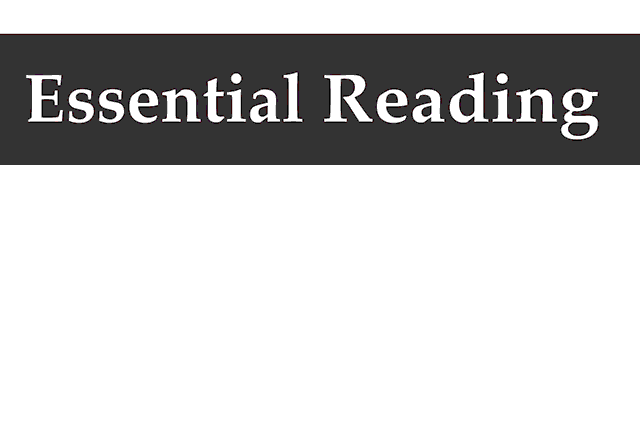
















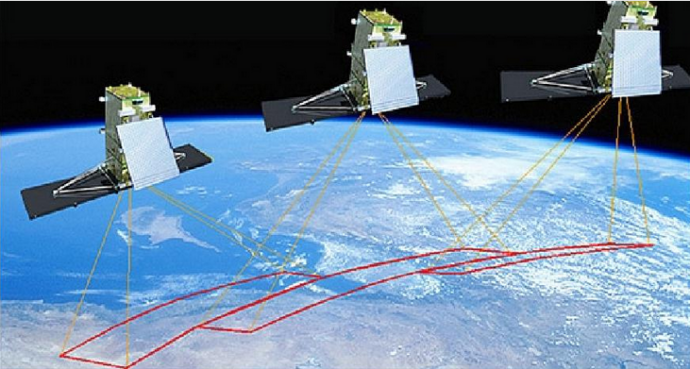



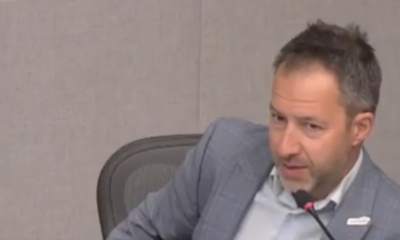
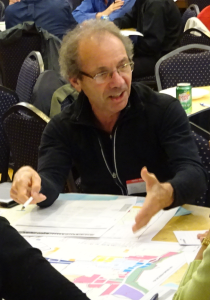
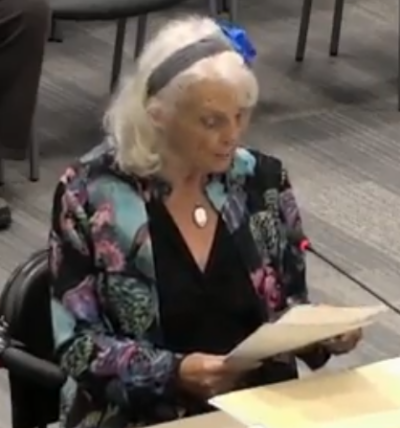




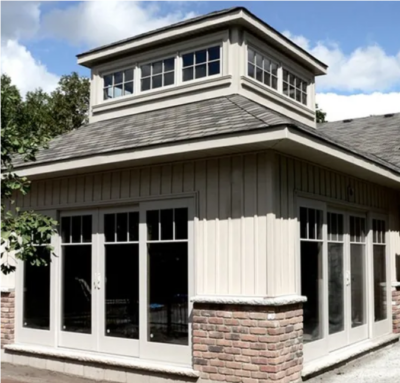 “Burlington appears to have an authoritarian council that wants to control people, and they REACT in a heavy handed way…shame on Burlington for cutting down naturalization! I am embarrassed and apologize to Karen Barnes from all reasonable Burlingtonians.”
“Burlington appears to have an authoritarian council that wants to control people, and they REACT in a heavy handed way…shame on Burlington for cutting down naturalization! I am embarrassed and apologize to Karen Barnes from all reasonable Burlingtonians.”
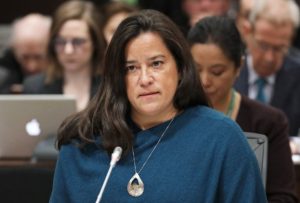
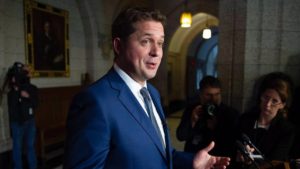

 Ray Rivers writes weekly on both federal and provincial politics, applying his more than 25 years as a federal bureaucrat to his thinking. Rivers was a candidate for provincial office in Burlington where he ran against Cam Jackson in 1995, the year Mike Harris and the Common Sense Revolution swept the province. He developed the current policy process for the Ontario Liberal Party.
Ray Rivers writes weekly on both federal and provincial politics, applying his more than 25 years as a federal bureaucrat to his thinking. Rivers was a candidate for provincial office in Burlington where he ran against Cam Jackson in 1995, the year Mike Harris and the Common Sense Revolution swept the province. He developed the current policy process for the Ontario Liberal Party.